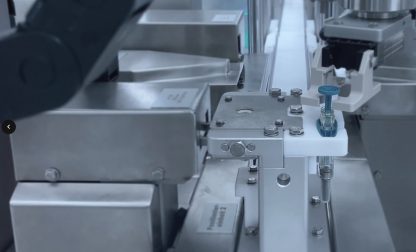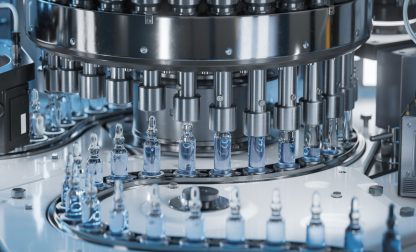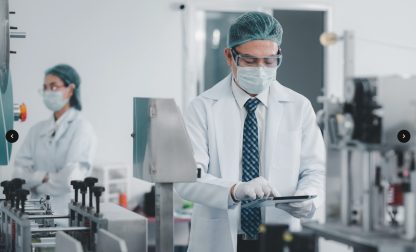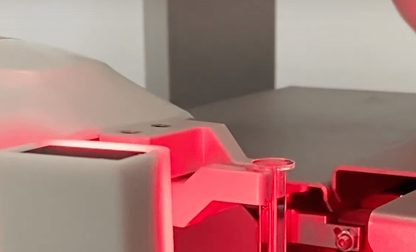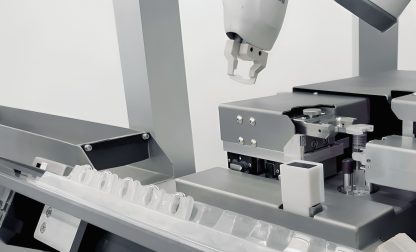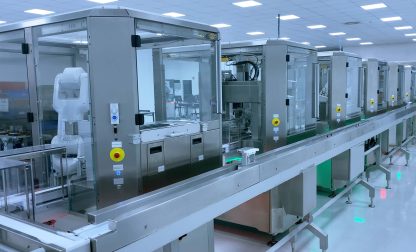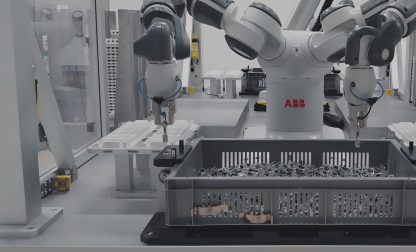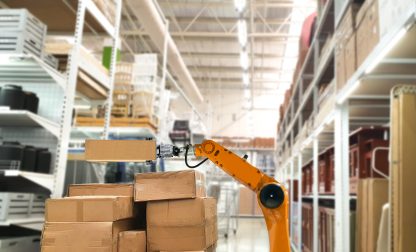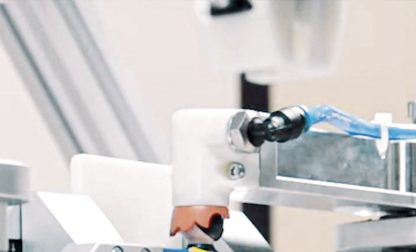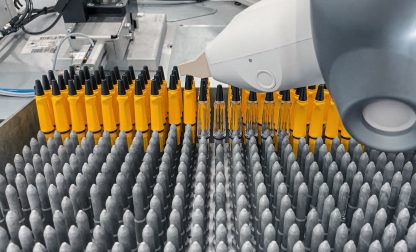Pharma process automation: 5 reasons why it increases efficiency
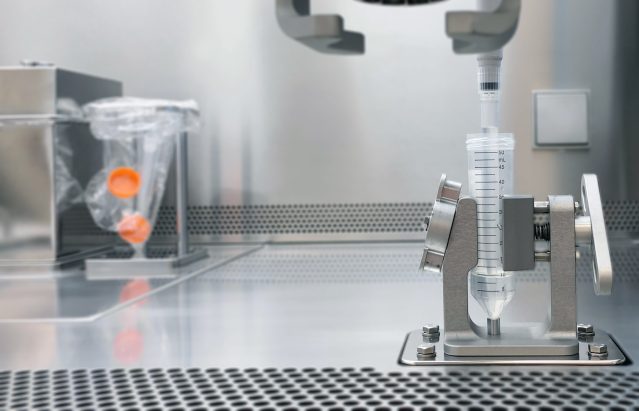
The pharmaceutical industry relies on efficiency to deliver life-saving medications. Automation has revolutionized pharmaceutical manufacturing with precision, speed, streamlined data management, compliance, and significant cost savings.
In this article, we will discover the role of automation in the life science industry, highlighting five reasons behind its growing importance. We will also explore the equipment and solutions driving this transformation and consider the future trends in pharmaceutical automation.
Automation is no longer a choice but a necessity in modern pharmaceuticals, where improved processes ultimately translate to higher-quality therapies for all.
Automated pharmaceutical manufacturing – an introduction
Automated manufacturing has emerged as a transformative force in the biopharmaceutical and pharmaceutical industry. It significantly optimizes the manufacture of medications and treatments.
Automation in pharmaceutical manufacturing brings several significant advantages. It replaces manual, error-prone tasks with robotic precision, minimizing human error and enhancing product consistency. This results in pharmaceuticals that meet the highest standards of safety and efficacy.
An automated approach further accelerates the production process. It can handle repetitive tasks at high speeds around the clock, reducing production times and costs significantly. As a result, pharmaceutical companies can meet the growing demand for medications more effectively.
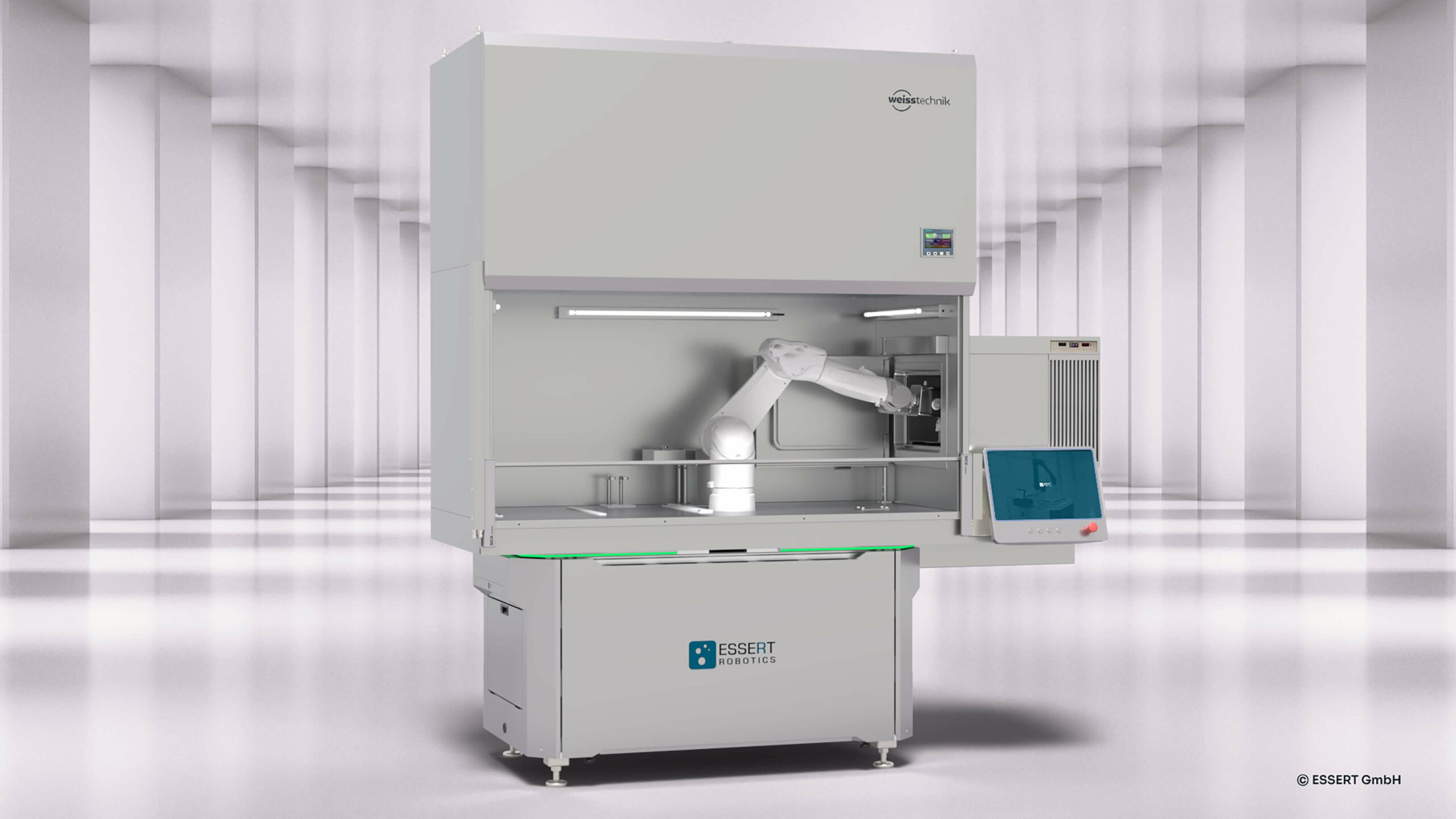
Advantages of automation: 5 reasons for process automation in pharma
The adoption of automation in pharmaceutical processes has grown exponentially due to several advantages. Why has automation become an indispensable asset in the pharmaceutical industry? We will show you 5 reasons why.
1. Enhanced precision and accuracy
Automation reduces the margin for error by replacing manual tasks with precise, repeatable actions performed by machines. This precision ensures that pharmaceutical products are manufactured with consistent quality, reducing the risk of deviations or defects.
2. Improved data management
Pharmaceutical companies handle vast amounts of data related to drug development, production, and quality control. Automation systems excel at data collection, storage, and analysis, ensuring that critical information is readily available and accurate.
3. Increased speed and productivity
Automation accelerates processes, allowing pharmaceutical companies to produce medications and treatments at shorter timelines. Tasks that may take hours or days when performed manually can be completed in a fraction of the time with automation.
4. Compliance and quality assurance
Maintaining compliance with regulatory standards is of highest importance in the pharmaceutical industry. Automation systems can enforce and document compliance at every step, reducing the risk of regulatory violations and product recalls. Additionally, they enable real-time quality control, ensuring that products meet the highest standards.
5. Cost savings
Automation leads to significant cost savings in the long run. By reducing the need for manual labor, minimizing errors, and optimizing resource utilization, pharmaceutical companies can lower production costs and enhance their overall financial efficiency.
Equipment and automation solutions
Automating pharmaceutical processes relies on a range of specialized equipment and automation solutions tailored to meet the unique challenges and demands of the field.
Pharmaceutical robots
Process automation plays a crucial role in automating tasks within pharmaceutical manufacturing. Robots are designed to handle delicate operations, such as precise dispensing of ingredients and assembling complex components. They ensure consistency and minimize contamination risks.
Laboratory automation systems
In pharmaceutical research and development, laboratory automation systems have become indispensable. These systems automate processes such as sample preparation, high-throughput screening, and data analysis. They enhance the efficiency of experiments, accelerate drug discovery, and improve data accuracy.
Process control and monitoring systems
Automation extends to process control and monitoring, ensuring that manufacturing processes remain within predefined parameters. Advanced control systems continuously collect data and make real-time adjustments, guaranteeing product consistency and compliance with regulatory standards.
Implementation challenges and solutions
While pharmaceutical process automation offers numerous benefits, its successful implementation can pose certain challenges.
Pharmaceutical companies often have complex existing systems and processes that need to be seamlessly integrated with new automation solutions. This integration can be challenging, but is crucial for a smooth transition.
Furthermore, implementing automation may require a significant initial investment. Companies need to carefully evaluate the cost implications and long-term return on investment (ROI) to justify the expenses.
Finally, introducing automation may require training employees to operate and maintain the new systems. Resistance to change and the need for upskilling can pose challenges during the transition.
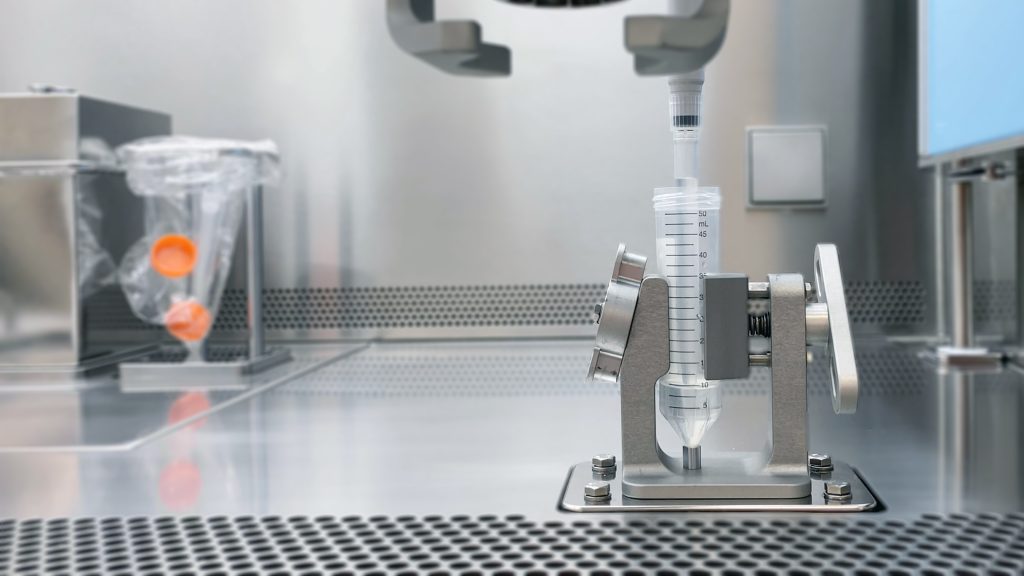
Automation solutions & easy implementation with ESSERT Robotics
At ESSERT Robotics we provide cutting-edge automation solutions tailored for the pharmaceutical industry. Our flagship offering, the ADVANCED Robotic Workstation, represents a highly flexible and modular automation solution designed to optimize manual processes.
Our robotic workstation is adaptable to a wide spectrum of automation needs. We provide specific solutions for all of your automation goals, from lab automation, to pharmaceutical pipetting or bin picking, to medical device assembly. The areas of application are particularly in automating repetitive tasks in the low-volume field.
An ideal solution for an automated production line for High Mix / Low Volume (HMLV) manufacturing is our ESSERT MicroFactory. This concept is born from the seamless integration of multiple ADVANCED Robotic workstations with state-of-the-art conveyor technology.
We place a strong emphasis on the ease of integration of our solutions into existing processes or manual labor. Our automation solutions are engineered to seamlessly complement current operations, mitigating any disruptions during the implementation phase.
Another implementation challenge is solved with the user-friendly approach to automation. The included software, ESSERT OS, is designed with simplicity in mind, eliminating the need for extensive software knowledge. This means that even without a software specialized workforce, your team can efficiently operate and manage the automation solutions.
Future trends in pharmaceutical process automation
The landscape of pharmaceutical process automation is continually evolving, driven by advancements in technology and shifting industry demands.
Artificial intelligence
AI is becoming increasingly integrated into pharmaceutical automation. AI-powered systems can analyze vast datasets, identify patterns, and assist in drug discovery, significantly accelerating research and development efforts. Machine learning algorithms also play a role in optimizing manufacturing processes and predictive maintenance.
Advanced Robotics and Cobots
The use of advanced robotics and collaborative robots (cobots) is on the rise. These robots can work alongside human operators, enhancing efficiency and safety in pharmaceutical manufacturing. Their flexibility and precision make them valuable assets in tasks ranging from assembly to packaging.
Personalized Medicine Production
Advancements in automation enable the production of personalized medications tailored to individual patients. This trend holds promise for precision medicine, where treatments are customized based on genetic and clinical data, potentially improving patient outcomes.
ESSERT Robotics leads as a pioneer in this specific field. Our flexible solutions excel in the High Mix / Low Volume (HMLV) sector. Personalized medicine demands rapid setup for variable products and customized variants, a feat achieved with the ADVANCED Robotic Workstation or multiple workstations combined in a ESSERT MicroFactory.
FAQs about pharmaceutical process automation
What is process automation in the pharma industry?
How is robotic process automation (RPA) used in the pharmaceutical industry?
What are the advantages of automation in the pharmaceutical industry?
Read more about automation in the pharmaceutical industry:
Pharmaceutical automation: Innovations shaping an industry
Pharmaceutical automation companies: Top 10 suppliers you should know
3 trends driving automation in life science industry
What is lab automation?
High-Mix Low-Volume: Possibilities & Limitations
